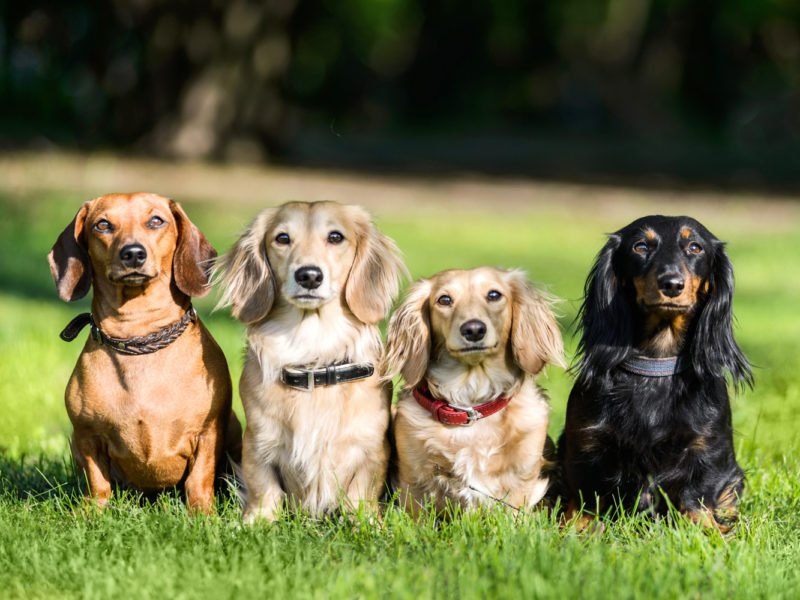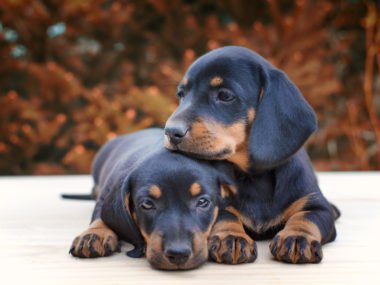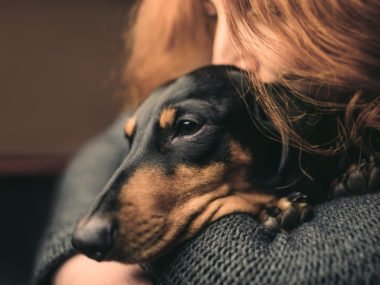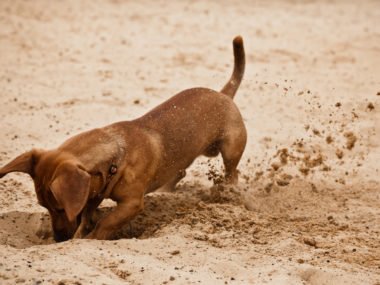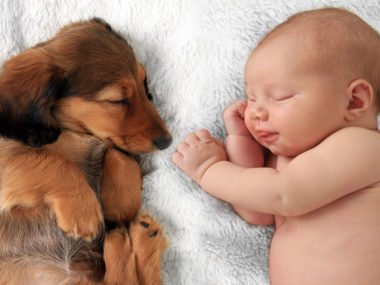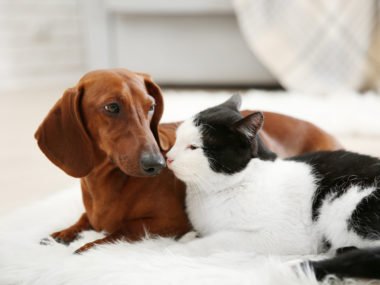Are you thinking of getting a dachshund and want to know about all the different coat colours? Perhaps you’ve heard about the health risks of certain colours and what to know which ones to avoid? Well, we’re going tell you everything you need to know.
What colours can dachshunds be? Dachshunds can be red, cream, black and tan, black and cream, chocolate and tan, chocolate and cream, blue (dilution of black) or Isabella (dilution of chocolate). They can have dapple, brindle, sable or piebald patterns.
If you’re wondering whether there’s anything you need to know about all the different colours, read on to find out about natural coat colours, dilutes and health issues.
Table of Contents
- How many dachshund coat colours are there?
- What is a blue dachshund?
- What is an Isabella dachshund?
- Do blue and Isabella dachshunds have health problems?
- Can dachshunds be white?
- Do white dachshunds have health problems?
- What are the different dachshund coat patterns?
- When should I visit a vet?
- What do I do next?
How many dachshund coat colours are there?
There are 6 main coat colours in the dachshund breed. Unfortunately, breeders have found ways to introduce all sorts of ‘fashionable’ colours and patterns into dachshunds’ coats, creating many more variations.
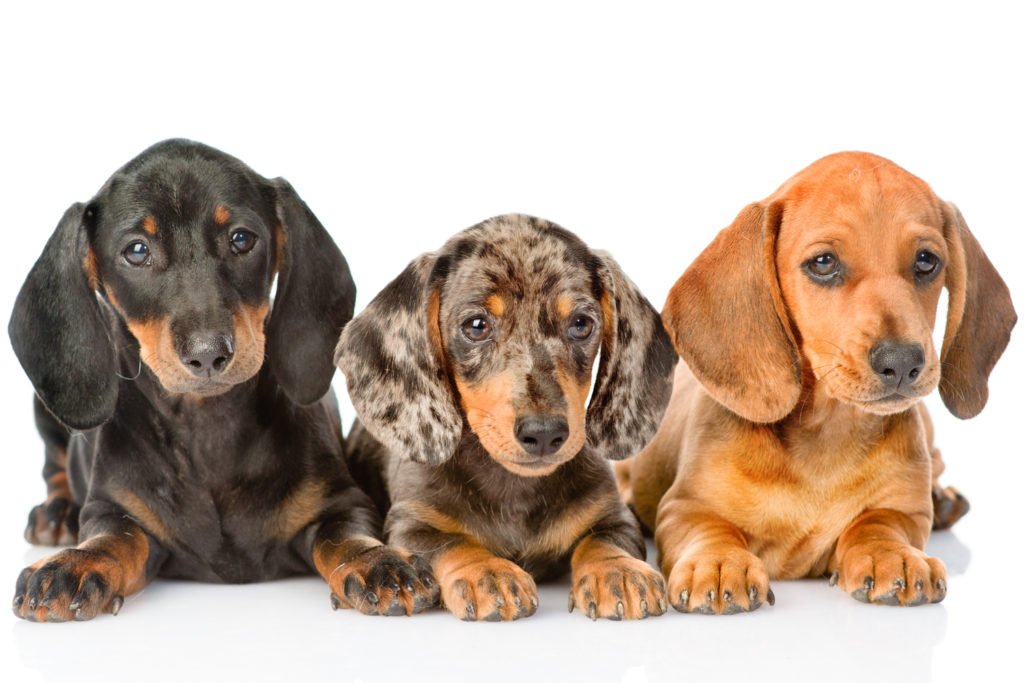
The UK is very strict on coat colours. That’s because introducing rarer colours is cruel and can lead to litters of unhealthy puppies (usually then sold for thousands of pounds). The US is a little more lenient on colours and pigments, and other countries have even less regulation, which is how these rarer colours end up in the dachshund gene pool. If you want more information, read the UK Kennel Club Breed Standard or the American Kennel Club Breed Standard.
Dachshunds can naturally be:
- Red
- Cream
- Black and tan
- Black and cream
- Chocolate and tan
- Chocolate and cream
But there are also the dilute colours:
- Blue (grey)
- Isabella (lilac or fawn)
Within all of these colours, you can also have different patterns and colour combinations. So dachshunds can be a block colour or a pattern of two colours. And you can even get tricolour dachshunds in different patterns too.
What is a blue dachshund?
Blue dachshunds have grey-coloured coats, usually with bits of tan. Their nails, pads and noses are blue too. Breeders basically achieve the blue tone by breeding a recessive gene to dilute the black colouring in the dachshund’s coat.
This greyish blue coat does look unusual, but it’s not at all natural for a dachshund and is actually really cruel. Rightly so, blue dachshund’s are called ‘highly undesirable’ by the UK Kennel Club Breed Standard. They’re rare in the UK (which frustratingly makes people want them more) but more common in the US and other countries. Dilute breeding is not fair on the dog as they can be born with very serious health issues.
What is an Isabella dachshund?
Isabella dachshunds have fawn tinged coats. They’re generally referred to as lilacs or fawns. Their nails, pads and noses are brown. Breeders achieve the lilac tone by breeding a recessive gene to dilute the chocolate colouring in the dachshund’s coat
Like blue dachshunds, Isabellas are categorised as ‘highly undesirable’ by the UK Kennel Club Breed Standard, but the Isabella colour is listed as acceptable in two-coloured dachshunds in the American Kennel Club Breed Standard.
Yes, Isabella pups are rare and unusual, but it’s cruel to breed this diluted colouring into their genes and the pups can be very unhealthy and sickly. Don’t be taken in by adverts online and only buy a dachshund from a registered breeder or reputable re-homing charity.
Do blue and Isabella dachshunds have health problems?
Yes, blue and Isabella dachshunds can have health problems. They’re selectively bred for their looks, with no thought to their health and welfare. They’re prone to; colour dilution alopecia, infection, skin cancer and other skin problems.
This is what you need to know:
Colour Dilution Alopecia
This condition causes dachshunds to lose their fur in patches and makes the coat thinner in general. Blue and Isabella pups may look normal when they’re sold to you, but can start to lose their fur from about 6 months. Basically, in dilute dogs, the hair is too thin and brittle, so it falls out at the follicle. Alopecia can also make your dachshund’s skin uncomfortably itchy, flaky and sore.
Infection
Some knock-on effects of Colour Dilution Alopecia are skin infections and dermatitis. Dilute dachshunds are more prone to infection because their skin is exposed.
Skin cancer
Dilute dachshunds are also more susceptible to skin cancers because their skin isn’t protected by a healthy coat. They can easily get sunburnt and may even struggle to go outside.
Dilute colours are not natural. Blue or Isabella dachshunds are only bred that way to make them look unusual, with no thought to the health and welfare of the pups. Breeders argue there’s no direct link between colour dilution and alopecia, but the evidence online speaks for itself.
The breeders sell the dilute dachshund puppies at a premium price and it’s the owners who are left to deal with the vet bills and disabilities. Please don’t buy them – it’s not fair on the dogs and will only encourage the breeders to keep going!
Can dachshunds be white?
Technically, yes: you can get all-white dachshunds, as well as dachshunds with bits of white in their coats. But this isn’t a good thing. The white colouring can lead to health issues, including blindness and deafness.
The UK Kennel Club Breed Standard says dachshunds should have no white colouring in their coat at all. The US Breed Standard is a bit different. They say pure white dachshunds aren’t allowed, but single-coloured dogs can have a small white patch on their chest (but they also say this isn’t desirable). If the dachshund is a piebald, he can have white in his coat, as long as the white doesn’t cover more than half his head and his ears aren’t white. Dapple dachshunds are allowed to have a big white patch on their chest.
Do white dachshunds have health problems?
Yes, white dachshunds can have health problems. They have a higher risk of deafness and blindness, and some puppies can even be born without eyes. Never breed a white dachshund on purpose – it’s cruel. And please don’t buy one as it only fuels the trade.
What are the different dachshund coat patterns?
- Dapple
- Double dapple
- Brindle
- Sable
- Piebald
This is what you need to know:
Dapple (and double dapple)
A dapple has a sort of mottled effect on top of the base colour. You should never breed two dapples, as the pup is likely to be a ‘double dapple’ and he’ll be at serious risk of health problems, including blindness, deafness, malformation, and missing ears or eyes.
Brindle
A brindle dachshund has distinctive tiger stripes, normally over a red or cream base coat.
Sable
You’ll only see the sable pattern in long-haired dachshunds. The fur is red at the base and black at the tip.
Piebald
Piebald dachshunds aren’t as common in the UK, but you can get them in the US and other countries. They have white coats with bits of grey, black and brown.
When should I visit a vet?
If you already have a blue, Isabella, white, piebald or double-dapple dachshund and they’re showing any signs of ill health, visit your vet straight away.
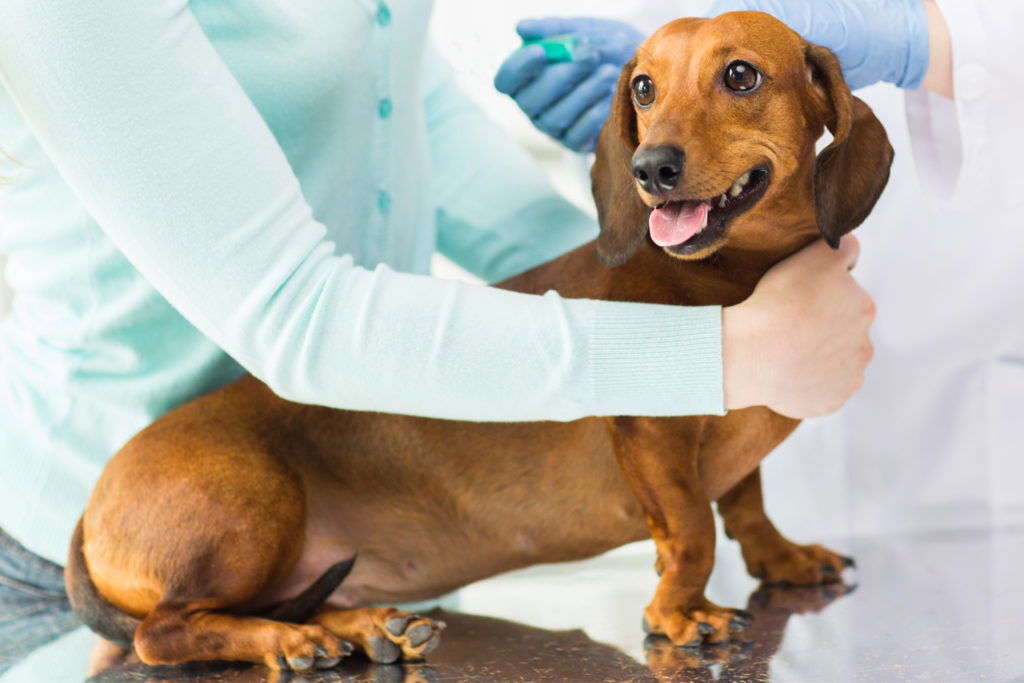
So, now you know about all the different dachshund coat colours, and what the health problems are with dilute, double dapple, white and piebald dachshunds, you have all the information you need to buy a beautiful, healthy dog. The only way to be 100% sure is to buy from a registered breeder or reputable re-homing charity, and not from online adverts offering cheap dachshunds, blue dachshunds or rare colours. All dachshunds are perfect just as they are, so there’s really no need to selectively breed new colours into them.
What do I do next?
If you read all the way to the end of this article, you’re exactly the sort of person I’d like to join my Facebook Group. Your support for my blog means everything to me. And if you enjoyed this article or found it helpful, please kindly share below. Thank you! 💋

